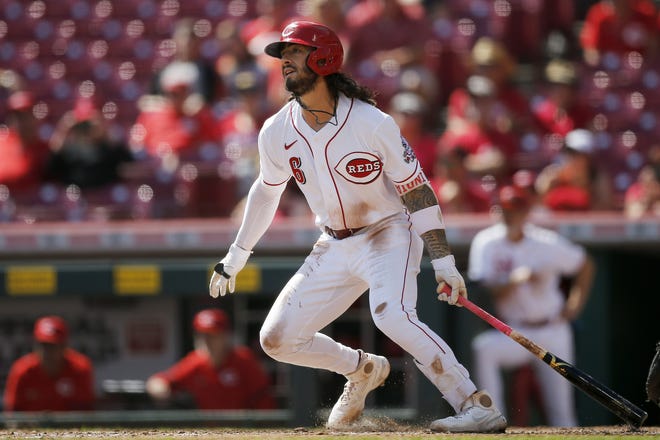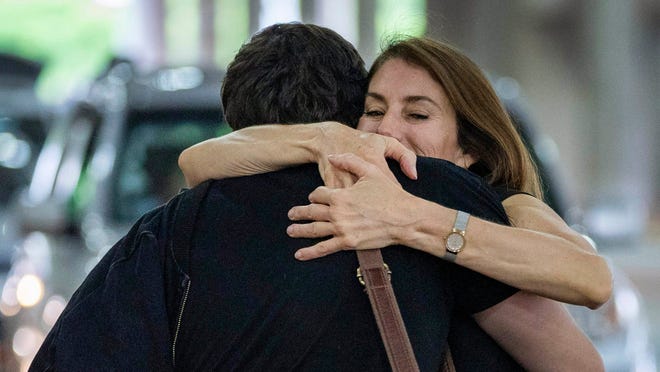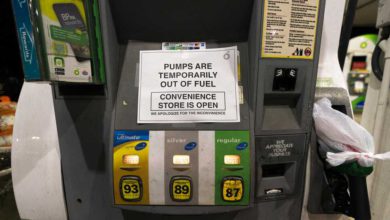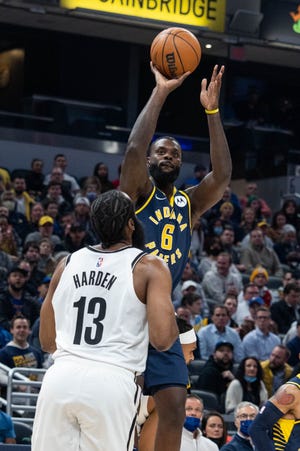
Major League Baseball Commissioner Rob Manfred called the loss of any regular-season games because of the ongoing lockout a “disastrous outcome,” but the league is on the brink of that disaster.
The league’s owners, who implemented the lockout on Dec. 2 when the sport’s collective bargaining agreement (CBA) expired, set a self-imposed deadline for Monday to come to an agreement without missing regular-season games. Manfred said the league ideally needs four weeks of spring training before the start of the season. Opening Day is scheduled for March 31.
Cincinnati Reds farm system:How Reds' 2020 first round pick Austin Hendrick responded to hitting .211 last season
There have been negotiations between owners and the players union each day this week in Florida, finally a sign of urgency after slow-moving talks for the first two months. Manfred and the owners, for example, waited 43 days after the start of the lockout to make their first proposal to the union on core economic issues.

The lockout has continued because of the wide gap on several economic issues between the owners and players, a disagreement that was several years in the making. Players want changes for how younger players are paid and they want anti-tanking measures for teams, discouraging non-competitive seasons during rebuilds. Owners were relatively happy with the previous CBA.
More:Minor league pitching injuries are a concern for Reds as they return to normal schedule
On-field issues aren't at the center of the lockout negotiations. The league is expected to implement a universal designated hitter for the upcoming season and there could be an expanded postseason format. Debates about regulating shifts at the Major League level, pitch clocks and automatic strike zones will likely take place in future seasons.
More:'My history is a little complex': Inside Reds reliever Nick Howard's battle through adversity
Here’s a rundown on four of the main economic issues at the core of the lockout based on reporting from USA Today Sports, the Associated Press and other outlets:
MINIMUM SALARIES

MLB’s minimum salary in 2021 was $570,500, which was the lowest of the four major American sports leagues (MLB, NFL, NBA, NHL). Players, under the old CBA, were typically paid close to the minimum salary for their first three Major League seasons. Once a typical player reached three to six years of MLB service time, he was eligible for salary arbitration. After six seasons, a player is eligible to become a free agent.
One of the trends throughout the last decade was teams moving more toward younger talent because those players are cheaper and under team control for longer than most free-agent signings. The league's median salary entering last season was $1.15 million, an 18% drop from 2019 and a 30% drop from a record high in 2015.
Both the owners and players agreed to raise the minimum salary in their proposals, but they differ on how much to increase it.
More:The future of Reds pitching: What the Reds new pitching coordinators bring to the table
Owners' proposal: The minimum salary would move to $640,000 in 2022 and increase by $10,000 in each subsequent season for the next five years, which covers the length of the next CBA. So, it would increase to $680,000 by 2026.
Players' proposal: The minimum salary would begin at $775,000 in 2022 and increase by $30,000 in each subsequent season for the next five years. It would sit at $895,000 by 2026.
ARBITRATION ELIGIBILITY/BONUS POOL

Under the previous CBA, there is a “Super Two” designation for a group of players to reach arbitration eligibility after two-and-a-half seasons instead of three seasons. Players must rank in the top 22% of service time among those who have garnered between two and three years of service time.
Cincinnati Reds center fielder Nick Senzel is an example of a “Super Two” player this offseason after he was called up in May 2019 and remained on the big-league roster for the following two years. MLBTradeRumors.com projects he could command around $1.1 million in arbitration, a big bump from the league’s minimum salary.
Both the owners and players in their proposals have agreed to implement a bonus pool for pre-arbitration players (fewer than three years of service time), though they disagree on the amount of the money placed into the bonus pool. New York Mets first baseman Pete Alonso, for example, made more money winning last year’s Home Run Derby ($1 million) than the Mets paid him ($667,775).
Owners' proposal: No change to the number of players who are eligible for arbitration and a $20 million bonus pool to the top 30 pre-arbitration performers.
Players' proposal: Instead of the 22% of “Super Two” players, the players association wants 75% of players who are between two and three years of service time to be eligible for arbitration. The bonus pool would be $115 million, distributed to 150 pre-arbitration players.
COMPETITIVE BALANCE TAX

MLB doesn’t operate with a salary cap, but the competitive balance tax (CBT) penalizes teams for spending past the league’s top limit and teams have shown hesitancy to cross it. In 2021, the CBT was $210 million, plus a 20% tax on all overages if a team surpassed it for the first time. The Dodgers ($32.65 million luxury tax bill) and Padres ($1.29 million) were the only teams that crossed the CBT last year. Five teams came within $4 million of the CBT and remained below it.
More:Daugherty: MLB disrespecting fans with plodding approach to labor talks
There is a 12.5% surtax for teams that spend $20-40 million more than the CBT. There is a 42.5% surtax on teams who spend more than $40 million above the CBT, plus their top draft pick drops 10 spots.
Neither side adjusted their proposal for the CBT in the first four days of talks this week, showing it may be the most contentious issue between the owners and players. Owners want it to become more restrictive, essentially a harder cap, and players want teams to spend.
Owners' proposal: The CBT would start at $214 million in 2022 and gradually increase to $222 million by 2026. There’d be a 50% overages tax for a team crossing the threshold and teams would lose a second-round pick for spending $20 million more than the CBT and lose a first-round pick for spending $40 million above the CBT.
Players' proposal: The CBT would start at $245 million in 2022 and rise to $273 million by 2026 with no changes to the overages tax rate from the previous CBA.
DRAFT LOTTERY

Looking for a way to disincentivize tanking and firesales at the trade deadline, the owners and players both included a draft lottery in their proposals. They differ on how many teams to include in the lottery and whether there should be penalties for teams that finish at the bottom of the standings for multiple years.
More:Nightengale: Reds ignoring their competitive window as farm system shows improvement
Owners' proposal (14-team playoff): The first four picks are subject to a lottery among the non-playoff teams.
Players' proposal (12-team playoff): The first seven picks are subject to a lottery. Teams drop in the draft if they finish in the bottom eight for consecutive seasons based on whether they pay revenue sharing (different rules for big and small market teams). Small-market clubs, the ones who receive competitive balance picks, can receive an additional draft pick if they make the playoffs (after the first round) or finish above .500 (after the second round).








